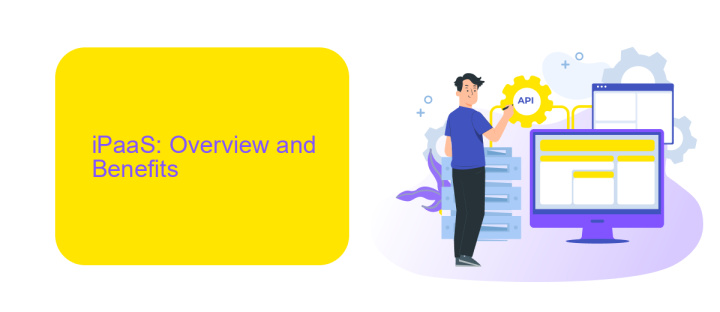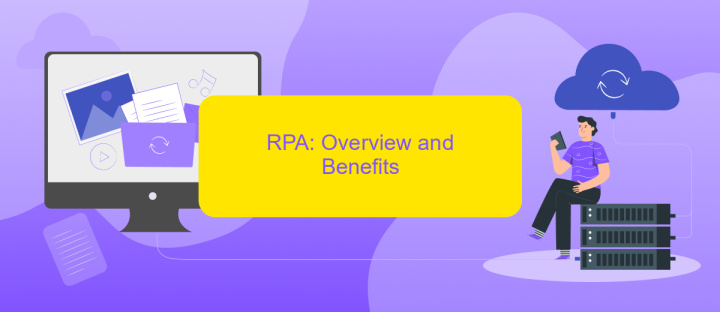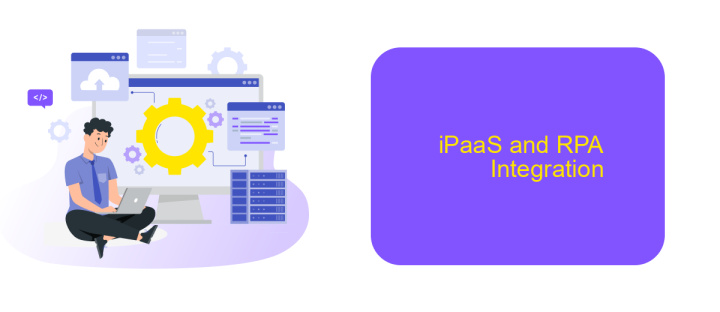iPaaS and RPA
In today's rapidly evolving digital landscape, businesses are increasingly adopting innovative technologies to streamline operations and enhance efficiency. Two such transformative solutions are Integration Platform as a Service (iPaaS) and Robotic Process Automation (RPA). By seamlessly integrating disparate systems and automating repetitive tasks, iPaaS and RPA empower organizations to achieve greater agility, reduce costs, and drive significant improvements in productivity.
Introduction
In today's rapidly evolving technological landscape, businesses are constantly seeking ways to streamline operations and enhance productivity. Two powerful tools that have emerged to meet these needs are Integration Platform as a Service (iPaaS) and Robotic Process Automation (RPA). iPaaS solutions, like ApiX-Drive, enable seamless integration between disparate systems, allowing data to flow effortlessly across various applications. Meanwhile, RPA automates repetitive tasks, freeing up human resources for more strategic activities.
- iPaaS facilitates the integration of various software applications and services.
- RPA automates mundane and repetitive tasks, increasing efficiency.
- ApiX-Drive offers user-friendly tools for setting up and managing integrations.
Combining iPaaS and RPA can significantly enhance business processes by ensuring that data is consistently available and tasks are performed without human intervention. This synergy not only improves operational efficiency but also allows companies to focus on innovation and growth. By leveraging solutions like ApiX-Drive, businesses can easily configure integrations and automate workflows, leading to a more agile and responsive organization.
iPaaS: Overview and Benefits

Integration Platform as a Service (iPaaS) is a cloud-based solution that facilitates seamless integration between disparate systems, applications, and data sources. It provides a unified platform where businesses can connect various software applications and automate workflows without the need for extensive coding. iPaaS solutions, such as ApiX-Drive, enable organizations to streamline their operations by automating data transfer and synchronization between different systems, thereby reducing manual effort and minimizing errors.
The benefits of iPaaS are manifold. Firstly, it enhances operational efficiency by automating repetitive tasks and ensuring real-time data flow across various applications. Secondly, it offers scalability, allowing businesses to easily expand their integration capabilities as they grow. Thirdly, iPaaS platforms like ApiX-Drive provide user-friendly interfaces and pre-built connectors, making it easier for non-technical users to set up and manage integrations. Additionally, iPaaS solutions often come with robust security features, ensuring that data is transferred securely between systems. Overall, iPaaS empowers businesses to be more agile and responsive in a rapidly evolving digital landscape.
RPA: Overview and Benefits

Robotic Process Automation (RPA) is a technology that allows businesses to automate repetitive and rule-based tasks, which are typically performed by human workers. By deploying software robots, organizations can significantly reduce the time and effort required to complete these tasks, thereby enhancing overall efficiency and accuracy.
- Cost Savings: Automating routine tasks can lead to substantial cost savings by reducing the need for manual labor.
- Improved Accuracy: RPA minimizes human errors, ensuring more reliable and consistent results.
- Scalability: RPA solutions can easily be scaled up or down based on the business needs, providing flexibility and adaptability.
- Enhanced Productivity: By freeing up employees from mundane tasks, RPA allows them to focus on more strategic and value-added activities.
- Compliance: Automated processes ensure adherence to regulatory and compliance standards, reducing the risk of non-compliance.
Incorporating RPA into your business processes can be further optimized by using integration services like ApiX-Drive. ApiX-Drive facilitates seamless integration between various applications and systems, making it easier to implement and manage RPA solutions. This not only streamlines workflows but also enhances the overall effectiveness of automation initiatives.
iPaaS and RPA Integration

Integrating iPaaS (Integration Platform as a Service) with RPA (Robotic Process Automation) provides a powerful solution for automating and streamlining business processes. This integration allows organizations to connect disparate systems, applications, and data sources, enabling seamless data flow and enhanced operational efficiency.
One of the key benefits of combining iPaaS and RPA is the ability to automate complex workflows that involve multiple systems. iPaaS platforms, such as ApiX-Drive, offer pre-built connectors and easy-to-use interfaces that simplify the integration process. This reduces the need for extensive coding and allows businesses to focus on optimizing their operations.
- Enhanced data synchronization across platforms
- Improved process efficiency and accuracy
- Reduced manual intervention and human error
- Scalable solutions for growing business needs
By leveraging the capabilities of iPaaS and RPA, businesses can achieve greater agility and responsiveness. Tools like ApiX-Drive enable seamless integration, ensuring that data flows smoothly between systems and processes are executed flawlessly. This synergy ultimately leads to improved productivity and a competitive edge in the market.
Conclusion
In summary, the integration of iPaaS (Integration Platform as a Service) and RPA (Robotic Process Automation) offers a robust solution for businesses aiming to streamline their operations and enhance efficiency. By leveraging the automation capabilities of RPA with the seamless integration features of iPaaS, organizations can significantly reduce manual tasks, minimize errors, and improve overall productivity. This synergy not only accelerates digital transformation but also provides a scalable and flexible framework for future growth.
Moreover, platforms like ApiX-Drive facilitate the process by offering user-friendly tools to set up and manage integrations effortlessly. This service simplifies the connection between various applications and automates workflows, ensuring that data flows smoothly across different systems. By utilizing such services, businesses can focus more on strategic initiatives rather than getting bogged down by technical complexities, ultimately driving innovation and achieving competitive advantage.
FAQ
What is iPaaS?
What is RPA?
How can iPaaS and RPA work together?
What are some common use cases for iPaaS?
How can I get started with iPaaS and RPA?
Time is the most valuable resource in today's business realities. By eliminating the routine from work processes, you will get more opportunities to implement the most daring plans and ideas. Choose – you can continue to waste time, money and nerves on inefficient solutions, or you can use ApiX-Drive, automating work processes and achieving results with minimal investment of money, effort and human resources.

